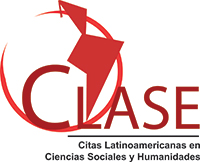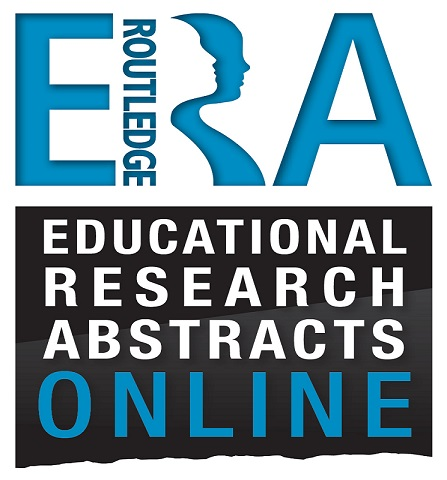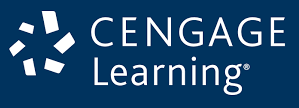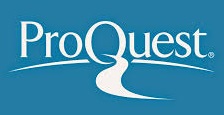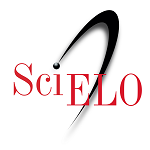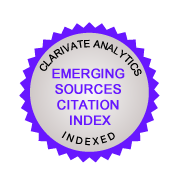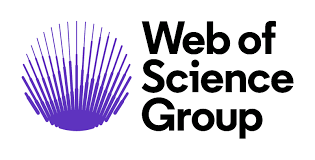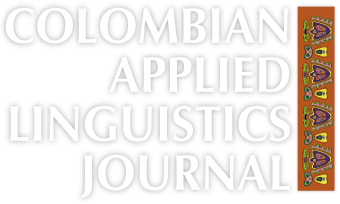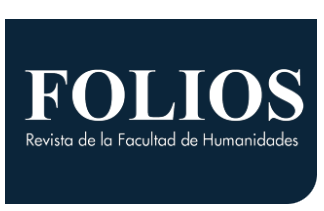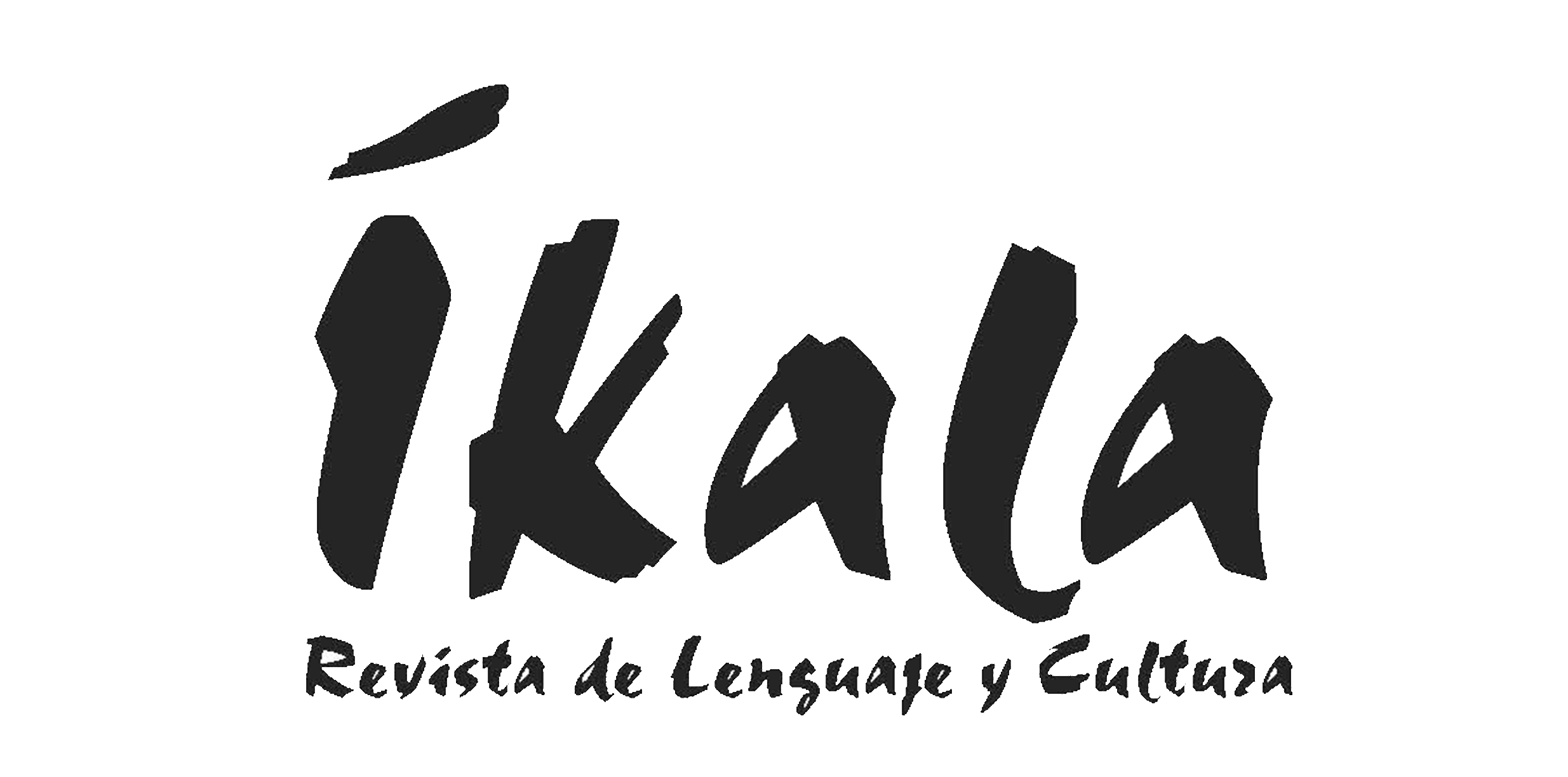A Basis for the Design of a Curriculum Incorporating Music and Drama in Children’s English Language Instruction
Fundamentos para el diseño de un currículo que incorpora la música y el arte dramático en la enseñanza de inglés a niños
DOI:
https://doi.org/10.15446/profile.v19n2.59583Keywords:
Curriculum design, drama, English as a foreign language, interdisciplinary, learning methodologies, music (en)arte dramático, diseño curricular, interdisciplinariedad, metodologías de aprendizaje, música (es)
This article presents the foundations to design a curriculum that integrates music and drama as strategies for the teaching of English as a foreign language. Besides promoting interdisciplinarity, this curriculum seeks to improve the language level of those children attending continuing educational programs at any higher education institution. The interdisciplinary curriculum not only innovates the offer of English courses for children—music and drama—but also promotes meaningful learning and creates a positive attitude in children so that a high degree of interest in learning a foreign language exists. The article, besides explaining the basis for curriculum design, highlights the advantages of integrating music and drama as a medium for the teaching of a foreign language.
https://doi.org/10.15446/profile.v19n2.59583
A Basis for the Design of a Curriculum Incorporating Music and Drama in Children’s English Language Instruction
Fundamentos para el diseño de un currículo que incorpora la música y el arte dramático en la enseñanza de inglés a niños
Mónica Rodríguez-Bonces*
Universidad de la Sabana, Chía and Pearson Education, Bogotá, Colombia
*Monica.rodriguez2@pearson.com
This article was received on August 13, 2016, and accepted on February 1, 2017.
How to cite this article (APA, 6th ed.): Rodríguez-Bonces, M. (2017). A basis for the design of a curriculum incorporating music and drama in children’s English language instruction. PROFILE Issues in Teachers’ Professional Development, 19(2), 203-223. https://doi.org/10.15446/profile.v19n2.59583.
This is an Open Access article distributed under the terms of the Creative Commons license Attribution-NonCommercial-NoDerivatives 4.0 International License. Consultation is possible at http://creativecommons.org/licenses/by-nc-nd/4.0/.
This article presents the foundations to design a curriculum that integrates music and drama as strategies for the teaching of English as a foreign language. Besides promoting interdisciplinarity, this curriculum seeks to improve the language level of those children attending continuing educational programs at any higher education institution. The interdisciplinary curriculum not only innovates the offer of English courses for children—music and drama—but also promotes meaningful learning and creates a positive attitude in children so that a high degree of interest in learning a foreign language exists. The article, besides explaining the basis for curriculum design, highlights the advantages of integrating music and drama as a medium for the teaching of a foreign language.
Key words: Curriculum design, drama, English as a foreign language, interdisciplinary, learning methodologies, music.
El presente artículo presenta el fundamento para el diseño de un programa curricular para el aprendizaje del inglés que integra la música y el arte dramático como vehículos de aprendizaje. Dicho programa, además de propiciar un trabajo interdisciplinario, busca mejorar el nivel de lengua requerido por un grupo de niños participantes de los cursos de un programa de extensión. El programa no solo innova el tipo de cursos de inglés para niños —música y arte dramático— sino que promueve el aprendizaje significativo y crea en los infantes una actitud positiva que promueve un alto nivel de interés en el aprendizaje del idioma extranjero. Además de presentar las bases de la estructura curricular, el artículo también menciona múltiples beneficios al integrar la música y el arte dramático como medios de enseñanza de una lengua extranjera.
Palabras clave: arte dramático, diseño curricular, interdisciplinariedad, metodologías de aprendizaje, música.
Introduction
Bilingualism has become one of the major aspirations in today’s society. Advances in communication and technologies place increasingly higher demands on the knowledge of another language. Today, in many Latin American countries, English occupies the focus of the curriculum, from pre-school to higher education. Countries such as Colombia, Panama, Mexico, Ecuador, Peru, Argentina, and Brazil have invested in school reforms and teacher training programs to better English language proficiency (Kamhi-Stein, Díaz-Maggioli, & de Oliveira, 2017). In fact, they have established national bilingual programs in which English is the main foreign language for learning. Many Latin American countries usually begin bilingual education during the first years of schooling. For example, “Ecuador” and “Panama Bilingüe” demand that schools offer foreign languages from first grades (Ministerio de Educación [MEDUCA], 2016).
Curriculum planning and within it school vision, mission, and syllabi should be formed in response to not just global tendencies but also local needs. It means every country has particular needs and contexts that should be considered when offering bilingual education programs. For instance, some regions may demand people learn English for tourism while others English for health. In the same way, some students learn English for travelling while others for working. Additionally, the task of developing and implementing bilingual education programs falls not just to institutions of primary and middle school, but also to those of higher education that offer foreign language extension/enrichment programs, especially for children.
Bearing in mind that in Colombian higher education institutions must follow the national government’s objectives for standards of quality in foreign language; and after reviewing the types of programs for children offered by various universities, I observed that while many universities offer programs that make use of games and music, so far no program has integrated music and drama for the teaching of English. For this reason, it was worth investigating a curricular structure that integrated methodological strategies for English language teaching with music and drama for children from the ages of 7 to 11.
This article presents the key aspects to consider in undertaking the design of a music- and drama-based foreign language curriculum for children.
Context
A principal challenge in the attainment of a high level of language mastery rests in the effective transition from one level of schooling to another. In Colombia, one hopes that by 2025 a fifth grader will have reached level A2 according to the Common European Framework of Reference for Languages (CEFR, Consejo de Europa, 2002). While many primary and middle school institutions have increased their hours of English instruction or modified curricula in order to offer content subjects in English, chiefly math and science, many families still turn to enrichment programs in order to supplement their children’s foreign language formation. Some of these enrichment programs are offered by universities and/or language institutes.
The supplemental English classes many children take to enhance their learning of the language permit greater weekly contact with the language and thus superior levels of competence, especially if one takes the CEFR’s recommendations for instructional hours into account (see Table 1).
According to Nunan (2001), in spite of the various disadvantages related to time (number of class hours) or with the fact that students do not actually learn everything that is covered in class, class time should be used efficiently in order to emphasize the linguistic aspects which are most pressing for students.
Nunan (2001) also explains that although the improvement of communicative abilities is one teaching objective, there are other objectives concerning the development of learning habits. This seems evident if one considers that an improvement in learning habits may result in an improved level of language. One way of bolstering learning habits and developing learning strategies is through programs that integrate the arts. Some studies done about the relation between arts and learning explain this statement. As a way of example, the Dana Foundation (2008) did research which evidenced that motivation, abilities for learning, memory, and habits of thought improved when studying arts. Consequently, any curriculum should consider, among other aspects, the interests and needs of students, set clear content learning outcomes, guide learning strategies, set the hours of instruction, and strengthen students’ skills and knowledge. Likewise, one must consider which concepts and components of music and drama will be taught and how.
In conclusion, a curriculum that integrates music and drama represents innovation in terms of processes of teaching and learning. Additionally, it fulfills national requirements and allows universities to strengthen goals related to quality and the provision of services through enrichment/extension programs.
State of the Art
As part of the basis for the development of a curricular proposal, familiarity with the work of other researchers in the field of music- and drama-based English teaching is essential. The following section presents several studies pertinent to this subject.
Foreign language instruction must involve meaningful communication. It means any exchange of information should be relevant and related to the background of the learner (Echevarría, Vogt, & Short, 2017). For instance, Marschke (2004) examined how a specific form of drama in education—drama methods—can create communication and authentic experience in foreign language learning. The concepts of acting and motivation comprise the theoretical pillars of the project. Drama is a practical process that can occur through task-based learning (TBL). TBL in this research is defined as an approach that permits learners to engage in communicative interactions through “authentic” tasks. Thanks to the integration of drama and TBL, one of the most basic goals of curriculum design is the development of cultural competence, understood as the ability to interact in different cultures. This study, in one of its main contributions, definitively shows that a task-based curriculum leads to a critical stance regarding culture. Another study that incorporates drama, specifically process drama and TBL is the one done by Hitotuzi (2014). The dramatic problematizer model (DPM), which is a seven-stage framework that incorporates critical pedagogy, process drama, and TBL, was used in a pedagogic intervention in a rural school in Brazil. Process drama let participants talk and reflect on local issues while using the foreign language.
Incorporating drama techniques not only enriches children’s social interactions but also provides the professor with innumerable tools related to the construction of characters, scenes, and contexts for communication to take place. In this vein, Naoko (2006) explored how six-year-olds in primary school and their teachers reacted to the integration of drama as a pedagogical tool in English class. Participants discussed the applicability of drama as a method of instruction in an academic environment where it previously had not been used. Results varied, as students overwhelmingly welcomed drama while some teachers did not see it as useful. The study reveals that drama has great potential to create communicative situations in various contexts.
Chukueggu (2012) examined dramatic activities as a tool to foment a positive and receptive attitude toward English. Through a theoretical review, having as a basis the socio-cultural theory of Vygotsky, the author summarizes the activities, theoretical basis, and benefits of drama in language learning. The strategies proposed in this paper shed light on the diversity of activities that can be included in an interdisciplinary curriculum. Benefits relate to motivation and self-confidence, betterment of communication skills, authentic language use, and proper pronunciation.
Research also exists as regards the use of drama in the study of English in situations involving linguistic difficulties related to phonetics, pragmatics, or sociolinguistics. Peláez Falla and Segura Fernández (2008) concluded that role-play, improvisation, and physical theater improve students’ oral performance. It is possible to say that these studies propose drama as a valid method for improving students’ communicative competences.
The following studies, unlike those already described, discuss the use of music in the study of English. To begin with, Lowe (2002) defines the contextual components derived from the integration of music and other art forms in the language curriculum. The results suggest that children were able to communicate more efficiently through the integration of music in their language class. Along the same lines, Sharifah (2002) investigated the effects of a music-based methodology for the study of English in Shah Alam (Malaysia). Findings indicated that teachers perceive music to be a useful tool for English instruction. Teachers who used music in class felt that student learning improved.
Other studies have identified a direct relationship between music and communicative skills, such as those by Milovanov, Huotilainen, Välimäki, Esquel, and Tervaniemi (2008), regarding pronunciation, and Bedoya Bedoya, Lozano Ñustez, Muñoz Riaño, Pal Forero, and Sarmiento Ceballos (2007) for vocabulary. The goal of Milovanov et al.’s study was to examine the relationship between musical aptitude and pronunciation. The objective of the study by Bedoya Bedoya et al., on the other hand, was to identify deficits in English vocabulary comprehension, retention, and transfer due to social, economic, and academic aspects through incorporating drawing and painting in the English class syllabus. Both studies explored whether artistic and musical features directly influenced learning. Results showed that students with good oral skills exhibited higher musical achievement and, in the second case, that lexical competence improved by virtue of these artistic components.
Medina (2002, 2003) carried out studies that provide a firm base for the use of music in language teaching for children. Research made use of various musical formats, including sung and illustrated texts, texts sung without illustrations, spoken and illustrated texts and spoken texts without illustrations. Findings showed that music facilitates information retention, takes students’ needs into consideration, activates prior knowledge, helps children reach linguistic goals, improves pronunciation through repetition, is pleasing to the ear, creates trust, is relaxing, offers authentic language, and provides examples of the language as used in real situations.
Pérez Aldeguer and Leganés Lavall (2012) analyzed the value of language as an interdisciplinary tool for primary school language instruction. Although their exploratory study focused on the teacher’s perspective, it sheds light on music’s ability to catalyze student learning as a “high-quality learning tool” (p. 137). Another important finding involved teachers’ lack of knowledge regarding the use of music as a versatile didactic resource for objectives related to lexical substitution, phonological patterns, or cultural education. According to the study, foreign language teachers’ weak musical training places these objectives out of reach.
The European Music Portfolio: A Creative Way Into Languages project (Ludke & Weinmann, 2012) is perhaps one of the most important contributions regarding the interdisciplinary approach to music and languages. Its principal goal is to enable primary school teachers to integrate music and language instruction so that students meet learning objectives in both subjects. The project presents the foundation for the learning and teaching of music and of foreign languages. It then explores the interrelation of the two subjects from an intercultural, cognitive, and communicative point of view. Finally, from a practical standpoint the European Music Portfolio (EMP) provides online and classroom activities for teacher use. The relationship between music and language has to do with motivation, development of concepts, learning environments, and creativity.
The aspects of music established in the EMP reinforce the curricular focus mapped out in the design proposed by this article. The authors focus on four domains of music that interconnect in the development of musical competence (see Figure 1).
While the curriculum described in this article does not aim to produce musicians, it is still instructive to consider these domains, as they allow us to formulate relevant goals. Children enjoy music and develop musical and linguistic skills while they participate in activities especially designed for language learning. In fact, the EMP integrates musical activities such as percussion, playing instruments, dance, and so on, with the development of communicative, lexical, and intercultural skills. Figure 2, taken from the EMP, makes use of an interdisciplinary approach in order to show parallels between common elements of music and language, aspects which Jordana (2008) delves into regarding the use of musical exercises to correct speech disorders.
At the time of writing this paper, no evidence shows the results of integrating language and arts in Latin America. Barriga Monroy (2011) says this research in language-arts is new and what has happened in countries like Colombia is some practitioners teach arts focusing on creativity, innovation, and reflection.
In conclusion, the various studies described in this section show that existing projects separately incorporate music and drama as instructional strategies. Therefore, the principal objective of study for this article is the creation of a program that integrates both drama and music. As Casals and Suárez (2012) state:
The interdisciplinary is indispensable in the skills-based framework to which today’s education must adhere. In this context, music as well as language (and in this case drama) are not only instruments of learning, construction and communication of knowledge, but also of artistic creation and the guidance of actions in diverse contexts. Consequently, the union of both (or all) of these can aid in the development of communicative (linguistic and cultural-artistic) competences. (p. 1, translated by the author)
Theoretical Framework
A theoretical underpinning is as crucial as knowledge of previous investigations into the integration of music and drama in English language teaching. When considering the possibility of designing a curriculum that includes two art forms, one should consider at least two key concepts along with theories of language learning: first, curriculum design and second, interdisciplinary learning as viewed from a competence-based perspective.
Curriculum Design
In agreement with Richards (2010), curriculum design refers to all the actions related to planning and implementation in the development or refurbishment of a curriculum. This process is systematic; it involves a series of steps that, properly carried out, will guarantee the successful attainment of the objectives developed by any institution; in this research, a higher education institution that offers an enrichment English class for children.
Chapter II of 1994’s Law 115 in Colombia addresses all aspects of curriculum and plan of studies. In this sense, one would define a curriculum as:
The whole of the criteria, plans of study, programs, methodologies, and processes that contribute to the integral formation and construction of cultural identity at the national, regional, and local level, including human, academic, and physical resources, in order to put policies into practice and carry out the proyecto educativo institucional.1 (Ministerio de Educación Nacional [MEN], 1994, Article 76, translated by the author)
At the same time, the CEFR defines curriculum as:
A sequence of educational experiences which may or may not be under the control of an institution. In this way, the curriculum does not end with the finalization of formal studies, but rather continues as part of a lifelong learning process. (Consejo de Europa, 2002, p. 173, translated by the author)
In other words, a curriculum establishes a process of teaching and learning that goes beyond a list of content topics or set of learning strategies. The definition given by Rodgers (as cited in Richards, 2010) clarifies that a curriculum is broader than a syllabus; the syllabus refers to content while a curriculum includes all activities associated with the norms and guidelines of the institution.
Various classifications of curricula according to type are possible. Table 2 summarizes several kinds of curricula.
The open or flexible and the interdisciplinary or integrated curricular models facilitate the inclusion of the arts in the teaching of English. The former allows for creativity on the part of the teacher and can be revised according to context. It can be recreated by teachers and is centered on processes that underlie formative assessment. The latter, according to Ortiz (2006), allows the study of important topics from the perspective of each academic area, and for the sharing of skills, expertise, and knowledge, specifically. Ortiz summarizes the following characteristics of the integrated curriculum:
- Knowledge, skills, and concepts are connected with new ideas.
- The student is important, but learns at her/his own pace.
- The student uses information from her/his environment in order to acquire authentic learning.
- The teacher is a facilitator who foments the thought processes that help students understand and assimilate new information meaningfully.
- The teacher presents facts and skills through generative topics that originate in the real lives of students.
- The curriculum aims at students’ possessing the skills and concepts to function effectively as a member of society.
Without a doubt, the integration of the arts into English language instruction offers varied options for learning; by making use of the competences related to each subject, teachers base planning around generative topics related to English language learning. For this reason, the resulting syllabus is thematically organized.
We cannot say that the development of a curriculum is finite, as it allows for evaluation and adjustment. However, we can affirm that familiarity with the curriculum design and its implications is necessary before going on to develop the syllabus, given that the syllabus is a list of contents that comprises only one part of the curriculum.
Competences
The development of an interdisciplinary curriculum such as that proposed here should take into account two basic competences: communicative and artistic.
The basic standards of competence in artistic education (MEN, 2011) are related to other basic competences such as communicative, scientific, mathematic and civic. The MEN (2011) clearly states, “Artistic education, through interaction with other areas of knowledge, contributes to the strengthening of basic competences, while also benefiting the development of the competences proper to artistic practices” (p. 79). Without a doubt, this belief is borne out by this curricular proposal.
In agreement with the MEN, three essential competences must be taken into account in order to create plans of study consistent with institutional intentions and pedagogical currents of thought:
- The institutional component, which corresponds to the institutional mission.
- The pedagogical component, which involves the institution’s pedagogical model.
- The disciplinary component, which encompasses the artistic and cultural practices the institution wishes to implement.
With regard to the final component, we must clarify that here, art functions as a means and not an end, given its role in an interdisciplinary approach.
Artistic competence is itself defined through the competences associated with artistic education. These are knowledge, skills, and attitudes, related to particular contexts, within specific domains (MEN, 2010).
The MEN based artistic education on four aspects (2010):
- Three competences: sensibility, aesthetic appreciation, and communication
- Three types of processes to acquire these competences: reception, creation, and sharing
- The different products that the student creates because of these processes
- The cultural and social contexts with which the student interacts (p. 12)
A curriculum that involves the arts has an inter-relation with communicative competence through the reception of an audience, students as creative agents, and the representation of what has been learned and created in a disseminating event. These artistic products are the result of a learning process and, finally, a framework that moves from the cultural to the intercultural through contact, which reaches beyond the local to the interpretation of and relation to the global.
When integrating drama and music in the English class, communicative competence relates to two visions, one from the perspective of the arts and one from the perspective of language, being the language embedded in the arts. From the artistic perspective, communicative competence
seeks for the subjects that exercise it to gain access to and from ties with artistic and cultural contexts in order to relate to these through artistic production and symbolic transformation. A work of art as an aesthetic fact not only permits the establishment of a student’s level of mastery of artistic language, but also enables union and dialogue between spectators around this work. Consequently, this competence is comprised of two fundamental components: production and symbolic transformation. (MEN, 2010, p. 43)
This means that communication will take place when the student transmits her or his interpretation of reality to an audience.
Table 3 presents the components for the organization of artistic education in the curriculum (MEN, 2010, p. 82).
Artistic education allows for the integration of knowledge. It is precisely here that communicative competence from a linguistic perspective relates to the arts. Artistic education creates a learning environment in which English communicative competence develops. Communicative competence presents language in different communicative situations in which the linguistic, sociolinguistic, and pragmatic aspects of the language play a significant role (MEN, 2007).
Proposal for a Model of Curriculum Design
The model of curriculum design shown in Figure 3 is based on the work of Johnson (1989), Tyler (1986), and Brown (2007).
This model suggests a cyclical practice, as the final stage allows for self-evaluation, through which one can reconsider or reformulate the diagnosis of needs, resulting in improvement of pedagogical practices. I explain this further below.
Needs Analysis
The curriculum should respond to the needs and interests of the learners. One should bear in mind that most of the children participating in an enrichment course also receive English instruction in their respective schools. Therefore, the primary consideration is that the program be innovative and motivating for the children, thus giving them the opportunity to meet the proposed standards while also maximizing their cognitive potential through the arts.
Needs vary from one institution to the next, and from one student to another. The analysis allows us to consider the population, including not just students but also teachers, directors, and parents; all of these actors, directly or indirectly, are involved in the program’s development. Through the needs analysis it is also possible to recognize existing resources as well as those that one can eventually obtain. It is even possible to diagnose language level and formulate a suitable implementation according to the context. For example, given that in an enrichment course schedule there is a variable, it may be more practical to offer courses in the afternoons or on the weekends.
We can collect this information from multiple sources, including interviews, questionnaires, document analysis, and comparisons or benchmarking with the offerings of similar programs at other universities. Appendix A sketches an example of a diagnosis of needs. The diagnosis forms the basis of curriculum design.
Graves (2000) judges that in order to design a foreign language course, the context should be taken into account, as this is where the initial needs of the population can be identified, leading to a more meaningful teaching and learning process. In general, institutions of higher education convene students of distinct cultural, social, and economic backgrounds. For this reason and in accordance with the model of curriculum design in this article, conducting a diagnosis is indispensable in order to clearly identify the type of population and its needs and interests. Appendix B shows an interview used as an instrument to diagnose. The interview seeks to create a teacher profile in order to determine if the course teacher should be a language teacher with additional artistic formation, or an arts teacher with knowledge of English.
Objectives and Content Statement
Determining the objectives allows for the creation of a flow chart, given that other large-scale actions derive from the objectives. According to Richards (2010, p. 120), the purposes of formulating objectives are to:
- Define the program
- Give guidance
- Focus instruction
- Describe changes in learning
Once one defines the objectives, the next step is the syllabus or table of contents. According to Dubin and Olshtain (2000) this can take any of five formats, as shown in Table 4.
Ortiz (2006) says that interdisciplinary topics “are organized by the intermingling of emergent concepts, patterns, and designs. Larger disciplines are mixed by utilizing skills, concepts, and attitudes which are themselves universal” (p. 44). In this case, the thematic focus will be a point of departure in order to teach the language by means of music and drama. For this reason, the matrix format is recommended as it begins with a thematic focus and permits flexibility, as was stated above.
It is worth noting that with the arts, contents is adapted by the institutions, as the MEN (2010) clarifies below:
The understanding and the pedagogical application of knowledge in general, based on the development of competences...is not concerned with the definition of thematic content in artistic formation, as these are determined according to each artistic practice and, accordingly, their establishment is the work of the teachers and institutions. (p. 21)
Table 5 shows the artistic activities that may be incorporated.
Once the program’s target population and its teachers have been decided upon, the administrative staff can formulate the program objectives. At this point, is it possible to include language learning objectives based on the CEFR? The answer is affirmative.
For example, the institution of higher education, which developed the curriculum proposed here, formulated the following objectives for its English program for children:
- Prepare the children in diverse competences (communicative, intercultural, and artistic) in order to reach level A2 according to the CEFR.
- Offer children the opportunity to learn English through two methodological strategies, music and drama.
The selection of content is important for program development. Content should be selected in accordance with the guidelines provided by the CEFR. Since the goal is to create an interdisciplinary curriculum, content must depart from a thematic focus that allows teachers of other subjects to integrate the interdisciplinary aspects. This integration will be easier if, after deciding on themes, the communicative and intercultural aspects are incorporated. Then the arts teacher will be able to decide on a series of activities involving the proposed themes.
Appendix C shows the contents of one part of a three-part lesson which makes up a unit in an enrichment program for children. We can clearly see several aspects including theme, communicative competence, intercultural competence, and the contributions of the arts in the dramatic and musical components. This example also includes linguistic components such as vocabulary, auditory discrimination, and grammar. Table 6 explains each component of an interdisciplinary matrix, which goes beyond a simple list of topics.
In conclusion, a curriculum design, which integrates different subjects must also strengthen an interdisciplinary content matrix. It not only tackles a thematic focus but also develops linguistic, interdisciplinary, cultural, and communicative components, all in light of learning objectives.
Implementation
One should consider four factors related to implementation: resources, time, methodologies, and content assessment. Owing to university autonomy, each institution of higher education will decide how to take these on.
Content provides the basis for the adoption, adaptation, or creation of materials. The generation of language and arts activities will follow the selection of thematic, communicative, and intercultural content. At this step, the process of language acquisition in children should be taken into consideration. In our time, social and cognitive learning theories have gained greatly in importance; in addition to the studies of brain functioning, we can determine distinct learning styles and strategies. These theories are fundamental in an arts-integrated curriculum so that teachers can plan student-centered learning.
One can plan instruction from three different perspectives: linguistic, dramatic, and musical. Keeping in mind that program content has already been established, I feel the Internet may prove useful to those teachers who require materials or activities. Various web sites exist in which teachers share their lesson plans and activities. Nonetheless, at the procedural level the adoption of a format such as that presented in Appendix D is recommended. Using this form as a guide, teachers plan first at the linguistic and then at the artistic level.
The contribution of musical as well as drama activities to foreign language acquisition is well defined. Table 7 briefly presents the principal contributions—in terms of methodological and theoretical aspects—of each art form toward the creation of an interdisciplinary curriculum.
The process of assessment is constant. After finishing each module, the students will complete an evaluation which will prepare them for the future when they take standardized tests. Given the role of artistic competence, part of the assessment will consist of a “show” in English.
Although music and drama are the means through which learning takes place, I recommend the rubric shown in Table 8 in order to assess the child’s process in the use of these arts toward English language learning.
As part of the artistic education competence, self-assessment is recommended. This is
the student’s assessment of her own work and goals that she has met; meant to recognize areas of competence, and identify areas of difficulty. The teacher in charge of artistic education must encourage skills related to self-criticism in students. If pedagogical purposes and process results are clear, the student should always be able to critically judge her own processes and its product. (MEN, 2011, p. 78)
In this manner, the rubric (see Table 8), which the teacher uses to evaluate the student, can always be used by the student as a self-assessment tool.
Assessment of the Curriculum
In this phase, we determine whether our objectives on all sides have been met or not. In fact, this assessment integrates the processes related to teaching, learning, and administration. Constant assessment, whether formal or informal, allows us to decide how well the curriculum has been implemented and what steps are necessary for continued improvement.
Using the work of Rogers (as cited in Gelineau, 2012), the evaluator should ask the following questions while carrying out a curricular evaluation:
- Have the objectives been met?
- What has occurred in the university and in the classroom with the implementation of the new curriculum?
- What opinion do the people directly involved with the curriculum hold?
- Is the enrichment program a success compared with those of other universities? Here can be included, for example, data on the number of students entering the program.
- Is the interdisciplinary work sufficient?
- Is it necessary to provide teachers with some kind of professional development?
- What are children’s and parents’ perceptions of the English program?
Documentation
Documenting the curriculum design is especially important for processes of certification and quality assurance. These documents also can serve as a guide for teachers and assist the leadership in self-assessment and improvement.
The institution can evaluate its curriculum design process and, with data collection, analyze the results. In fact, the MEN’s Guide No. 4 or Self-Assessment Manual (MEN, 2014) can be used as the chief tool for annual institutional review and therefore document the impact of the interdisciplinary curriculum proposed here through responses to the questions related to the academic administration indicator (Table 9).
The options for conducting the self-assessment also include interviews, questionnaires, and observations. There should always be a file with the results of the initial phase of the cycle of curriculum design and subsequent recommendations. All the documents that account for the curriculum design show evidence of a rigorous, high-quality process.
Conclusion
The presented curriculum design offers an opportunity for teaching innovation. An enrichment English program for children can follow the groundwork discussed in this article and thus institutions become able to fulfill their extension programs mission as demanded by the Higher Education Colombian system.
Among the general characteristics of the curriculum proposed in this article, one can find it aligns with national standards. It also takes into account art-and-drama competences, theories of children’s language learning, interdisciplinary activities, and formative and summative assessment.
This proposal, while simple in appearance, confronts multiple considerations for enrichment programs. First, interdisciplinary work is advised. The collaboration between English-, music-, and drama-area teachers promotes the integrated curriculum. The incorporation of music and drama goes beyond the mere singing of a song or simple role-plays. The integration of music and drama promotes meaningful learning and creates a positive attitude since children engage in “authentic” situations while using the foreign language. Second, the adoption or design of materials is a concern. At present, this type of curriculum faces a lack of materials on the market suitable for an approach in which English is taught through art and drama. Educators need to plan carefully to evidence language and content objectives.
Third, the curriculum design proposed in this article provides different tools for practitioners. A cyclical process starts with a needs analysis and ends with assessment. The process includes rubrics, activities, themes, and outcomes.
Finally, this article, rather than presenting a thoroughly prepared curriculum, leaves the door open so that each institution can use this approach together with its own innovations in order to improve the quality of its educational offerings.
1In Colombia, every educational institution must have a proyecto educativo institucional (PEI), a document which serves as a mission statement and long-term plan, covering everything from pedagogical strategies to staff and student regulations and management.
References
Athiemoolam, L. (2004, December). Drama in education and its effectiveness in English second/foreign language classes. Paper presented at The First International Language Learning Conference (ILLC), Universiti Sains Malaysia, Penang.
Barriga Monroy, M. L. (2011). Estado del arte y definición de términos sobre el tema “La investigación en educación artística” [Related literature and definition of terms about the topic “Research in Artistic Education”]. El Artista, 8.
Bedoya Bedoya, P. I., Lozano Ñustez, M., Muñoz Riaño, S. M., Forero Pal, S., & Sarmiento Ceballos, J. I. (2007). Fortalecimiento de la competencia léxica del inglés como lengua extranjera a través de diferentes técnicas artísticas [Strengthening English language lexical competence through diverse artistic techniques] (Undergraduate thesis). Universidad de La Salle, Bogotá, Colombia.
Brown, D. (2007). Teaching by principles: An interactive approach to language pedagogy. White Plains, US: Pearson.
Casals, A., & Suárez, M. (2012). Música y aprendizaje de lenguas en el marco competencial [Music and language learning under the competences framework]. Retrieved from Academia.edu.
Chukueggu, C. O. C. (2012). The use of drama and dramatic activities in English language teaching. The Crab: Journal of Theatre and Media Arts, 7, 151-159.
Consejo de Europa. (2002). Marco común europeo de referencia para las lenguas: aprendizaje, enseñanza, evaluación [Common European Framework of References for Languages: Learning, teaching, assessment]. Madrid, ES: Ministerio de Educación, Cultura y Deporte.
The Dana Foundation. (2008). Learning, arts, and the brain: The Dana Consortium report on arts and cognition. New York, US: Dana Press.
Dubin, F., & Olshtain, E. (2000). Course design. New York, US: Cambridge University Press.
Echevarría, J., Vogt, M., & Short, D. J. (2017). Making content comprehensible for English learners: The SIOP® model (4th ed.). Boston, US: Pearson.
Gelineau, P. (2012). Integrating the arts across the elementary school curriculum. New York, US: Cengage.
Graves, K. (2000). Designing language courses: A guide for teachers. Boston, US: Heinle Cengage.
Hitotuzi, N. (2014). The dramatic problematizer model: An approach towards the development of critical thinking in the EFL classroom. The EFL Journal, 5(2), 1-22.
Johnson, R. K. (1989). The second language curriculum. New York, US: Cambridge University Press. http://doi.org/10.1017/CBO9781139524520.
Jordana, M. (2008). La contribución de la música en la estimulación de procesos de adquisición de lenguaje [Incorporating music in the framework of language stimulation and intervention]. Eufonia: Didáctica de la Música, 43, 49-62.
Kamhi-Stein, L. D., Díaz-Maggioli, G, and de Oliveira, L. C. (Eds.) (2017). English Language teaching in South America: Policy, preparation, and practice. Bristol, UK: Multilingual Matters. http://doi.org/10.21832/kamhi7975.
Lowe, A. (2002). Toward integrating music and other art forms into the language curriculum. Research Studies in Music Education, 18, 13-25. http://doi.org/10.1177/1321103X020180010301.
Ludke, K. M., & Weinmann, H. (Eds.) (2012). European music portfolio: A creative way into languages (Teacher’s handbook). Comenius Lifelong Learning Project. Retrieved from https://www.researchgate.net/publication/260265824_European_Music_Portfolio_A_Creative_Way_into_Languages_-_Teacher's_Handbook.
Lynch, L. M. (2005, November 30). 9 reasons why you should use songs to teach English as a foreign language: Using songs to teach foreign language [Web log post]. Retrieved from http://bettereflteacher.blogspot.com/2005/11/9-reasons-why-you-should-use-songs-to.html.
Marschke, R. (2004). Creating contexts, characters, and communication: Foreign language teaching and process drama (Master’s thesis). Queensland University of Technology, Australia.
Medina, S. L. (2002). Using music to enhance second language acquisition: From theory to practice. Retrieved from http://www.forefrontpublishers.com/eslmusic/articles/238-using-music-to-enhance-second-languageacquisition-from-theory-to-practice/.
Medina, S. L. (2003). Acquiring vocabulary through story-songs. MEXTESOL Journal 26(1), 11-15.
Milovanov, R., Huotilainen, M., Välimäki, V., Esquel, P. A. A., & Tervaniemi, M. (2008). Musical aptitude and second language pronunciation skills in school-aged children: Neural and behavioral evidence. Brain Research, 1194(15), 81-89. http://doi.org/10.1016/j.brainres.2007.11.042.
Ministerio de Educación, MEDUCA. (2016). Panamá Bilingüe: informe de transparencia. Ministerio de Educación [Bilingual Panama: Transparency report from the Ministry of Education]. Panamá, PA: Author.
Ministerio de Educación Nacional, MEN. (1994). Ley General de Educación [General Educational Law]. Bogotá, CO: Author.
Ministerio de Educación Nacional, MEN. (2007). Lineamientos generales para la enseñanza del inglés [General guidelines for the teaching of English]. Bogotá, CO: Author.
Ministerio de Educación Nacional, MEN. (2010). Orientaciones pedagógicas para la educación artística en básica y media [Pedagogical guidelines for artistic education at primary and secondary schools]. Bogotá, CO: Author.
Ministerio de Educación Nacional, MEN. (2011). Lineamientos curriculares para la educación artística [Curricular guidelines for artistic education]. Bogotá, CO: Author.
Ministerio de Educación Nacional, MEN. (2014). Manual de autoevaluación y clasificación de establecimientos privados de preescolar, básica y media, para la definición de tarifas [Handbook of self-assessment and classification of private kindergaten, primary, and secondary schools for the definition of fees]. Bogotá, CO: Author.
Naoko, A. (2006). The waterhole: Using educational drama as a pedagogical tool in a foreign language class at a public primary school in Japan (Doctoral dissertation). The University of Melbourne, Australia.
Nunan, D. (2001). The learner-centred curriculum. Cambridge, UK: Cambridge University Press.
Ortiz, E. (2006). Retos y perspectivas del currículo integrado [Challenges and perspectives of integrated curriculum]. Cuaderno de Investigación en la Educación, 21, 35-56.
Peláez Falla, M. N, & Segura Fernández, M. A. (2008). Las técnicas escénicas y las técnicas corporales del actor como herramienta metodológica para cualificar el desempeño comunicativo del docente en el aula de clase [The actor’s stage and body techniques as a methodological tool to assess the teacher’s comunicative performance in the classroom] (Undergraduate thesis). Pontificia Universidad Javeriana, Bogotá, Colombia.
Pérez Aldeguer, S., & Leganés Lavall, E. N. (2012). La música como herramienta interdisciplinar: un análisis cuantitativo en el aula de lengua extranjera de primaria [Music as an interdisciplinary tool: A quantitative analysis in the primary foreign language classroom]. Revista de Investigación en Educación, 10(1), 127-143.
Richards, J. C. (2010). Curriculum development in language teaching. Cambridge, UK: Cambridge University Press.
Sharifah, H. (2002). English teachers’ opinions on the use of music in the English classroom (Unpublished undergraduate thesis). Universiti Kebangsaan Malaysia, Selangor, Malaysia.
Tyler, R. W. (1986). Principios básicos del currículo [Basic principles of curriculum]. Buenos Aires, AR: Troquel.
About the Author
Mónica Rodríguez-Bonces holds a PhD in Regional and Economic Integration and Development from Universidad de León (Spain); and an MA in Applied Linguistics from Universidad Distrital Francisco José de Caldas (Colombia). She is currently the academic director for Pearson Colombia and MA counselor at Universidad de La Sabana.
Appendix A: Needs Analysis Sample
Questionnaire:
- Why do you want to study in an English extension program at this university?
- How often do you practice English outside your school?
- What would you like to do different in this program?
- Do you like speaking English? Writing, listening to and reading it?
- Do you feel comfortable in front of an audience?
Appendix B: Teacher’s Interview
- Should an interdisciplinary language program be created? Explain.
- Which artistic component should be included in a language program for children?
- What is the suggested teacher’s profile for a language program that integrates music and drama?
- How would you integrate language and arts in a children’s language course?
- How would you plan a language lesson integrating music and drama with it? How would you organize the group of children?
Appendix C: Sample of Content Matrix, English Program for Children

Appendix D: Interdisciplinary Lesson Plan Form
Date:__________________ Level:______________________________
Unit/Theme: _______________________________________________
Arts objective(s):
_______________________________________________
_______________________________________________
Language objective(s):
_______________________________________________
_______________________________________________

Learning strategies

Sequence: (Write the class sequence - indicate times)
Comments: (to be written at the end of the lesson)
References
Athiemoolam, L. (2004, December). Drama in education and its effectiveness in English second/foreign language classes. Paper presented at The First International Language Learning Conference (ILLC), Universiti Sains Malaysia, Penang.
Barriga Monroy, M. L. (2011). Estado del arte y definición de términos sobre el tema “La investigación en educación artística” [Related literature and definition of terms about the topic “Research in Artistic Education”]. El Artista, 8.
Bedoya Bedoya, P. I., Lozano Ñustez, M., Muñoz Riaño, S. M., Forero Pal, S., & Sarmiento Ceballos, J. I. (2007). Fortalecimiento de la competencia léxica del inglés como lengua extranjera a través de diferentes técnicas artísticas [Strengthening English language lexical competence through diverse artistic techniques] (Undergraduate thesis). Universidad de La Salle, Bogotá, Colombia.
Brown, D. (2007). Teaching by principles: An interactive approach to language pedagogy. White Plains, US: Pearson.
Casals, A., & Suárez, M. (2012). Música y aprendizaje de lenguas en el marco competencial [Music and language learning under the competences framework]. Retrieved from Academia.edu.
Chukueggu, C. O. C. (2012). The use of drama and dramatic activities in English language teaching. The Crab: Journal of Theatre and Media Arts, 7, 151-159.
Consejo de Europa. (2002). Marco común europeo de referencia para las lenguas: aprendizaje, enseñanza, evaluación [Common European Framework of References for Languages: Learning, teaching, assessment]. Madrid, ES: Ministerio de Educación, Cultura y Deporte.
The Dana Foundation. (2008). Learning, arts, and the brain: The Dana Consortium report on arts and cognition. New York, US: Dana Press.
Dubin, F., & Olshtain, E. (2000). Course design. New York, US: Cambridge University Press.
Echevarría, J., Vogt, M., & Short, D. J. (2017). Making content comprehensible for English learners: The SIOP® model (4th ed.). Boston, US: Pearson.
Gelineau, P. (2012). Integrating the arts across the elementary school curriculum. New York, US: Cengage.
Graves, K. (2000). Designing language courses: A guide for teachers. Boston, US: Heinle Cengage.
Hitotuzi, N. (2014). The dramatic problematizer model: An approach towards the development of critical thinking in the EFL classroom. The EFL Journal, 5(2), 1-22.
Johnson, R. K. (1989). The second language curriculum. New York, US: Cambridge University Press. http://doi.org/10.1017/CBO9781139524520.
Jordana, M. (2008). La contribución de la música en la estimulación de procesos de adquisición de lenguaje [Incorporating music in the framework of language stimulation and intervention]. Eufonia: Didáctica de la Música, 43, 49-62.
Kamhi-Stein, L. D., Díaz-Maggioli, G, and de Oliveira, L. C. (Eds.) (2017). English Language teaching in South America: Policy, preparation, and practice. Bristol, UK: Multilingual Matters. http://doi.org/10.21832/kamhi7975.
Lowe, A. (2002). Toward integrating music and other art forms into the language curriculum. Research Studies in Music Education, 18, 13-25. http://doi.org/10.1177/1321103X020180010301.
Ludke, K. M., & Weinmann, H. (Eds.) (2012). European music portfolio: A creative way into languages (Teacher’s handbook). Comenius Lifelong Learning Project. Retrieved from https://www.researchgate.net/publication/260265824_European_Music_Portfolio_A_Creative_Way_into_Languages_-_Teacher's_Handbook.
Lynch, L. M. (2005, November 30). 9 reasons why you should use songs to teach English as a foreign language: Using songs to teach foreign language [Web log post]. Retrieved from http://bettereflteacher.blogspot.com/2005/11/9-reasons-why-you-should-use-songs-to.html.
Marschke, R. (2004). Creating contexts, characters, and communication: Foreign language teaching and process drama (Master’s thesis). Queensland University of Technology, Australia.
Medina, S. L. (2002). Using music to enhance second language acquisition: From theory to practice. Retrieved from http://www.forefrontpublishers.com/eslmusic/articles/238-using-music-to-enhance-second-languageacquisition-from-theory-to-practice/.
Medina, S. L. (2003). Acquiring vocabulary through story-songs. MEXTESOL Journal 26(1), 11-15.
Milovanov, R., Huotilainen, M., Välimäki, V., Esquel, P. A. A., & Tervaniemi, M. (2008). Musical aptitude and second language pronunciation skills in school-aged children: Neural and behavioral evidence. Brain Research, 1194(15), 81-89. http://doi.org/10.1016/j.brainres.2007.11.042.
Ministerio de Educación, MEDUCA. (2016). Panamá Bilingüe: informe de transparencia. Ministerio de Educación [Bilingual Panama: Transparency report from the Ministry of Education]. Panamá, PA: Author.
Ministerio de Educación Nacional, MEN. (1994). Ley General de Educación [General Educational Law]. Bogotá, CO: Author.
Ministerio de Educación Nacional, MEN. (2007). Lineamientos generales para la enseñanza del inglés [General guidelines for the teaching of English]. Bogotá, CO: Author.
Ministerio de Educación Nacional, MEN. (2010). Orientaciones pedagógicas para la educación artística en básica y media [Pedagogical guidelines for artistic education at primary and secondary schools]. Bogotá, CO: Author.
Ministerio de Educación Nacional, MEN. (2011). Lineamientos curriculares para la educación artística [Curricular guidelines for artistic education]. Bogotá, CO: Author.
Ministerio de Educación Nacional, MEN. (2014). Manual de autoevaluación y clasificación de establecimientos privados de preescolar, básica y media, para la definición de tarifas [Handbook of self-assessment and classification of private kindergaten, primary, and secondary schools for the definition of fees]. Bogotá, CO: Author.
Naoko, A. (2006). The waterhole: Using educational drama as a pedagogical tool in a foreign language class at a public primary school in Japan (Doctoral dissertation). The University of Melbourne, Australia.
Nunan, D. (2001). The learner-centred curriculum. Cambridge, UK: Cambridge University Press.
Ortiz, E. (2006). Retos y perspectivas del currículo integrado [Challenges and perspectives of integrated curriculum]. Cuaderno de Investigación en la Educación, 21, 35-56.
Peláez Falla, M. N, & Segura Fernández, M. A. (2008). Las técnicas escénicas y las técnicas corporales del actor como herramienta metodológica para cualificar el desempeño comunicativo del docente en el aula de clase [The actor’s stage and body techniques as a methodological tool to assess the teacher’s comunicative performance in the classroom] (Undergraduate thesis). Pontificia Universidad Javeriana, Bogotá, Colombia.
Pérez Aldeguer, S., & Leganés Lavall, E. N. (2012). La música como herramienta interdisciplinar: un análisis cuantitativo en el aula de lengua extranjera de primaria [Music as an interdisciplinary tool: A quantitative analysis in the primary foreign language classroom]. Revista de Investigación en Educación, 10(1), 127-143.
Richards, J. C. (2010). Curriculum development in language teaching. Cambridge, UK: Cambridge University Press.
Sharifah, H. (2002). English teachers’ opinions on the use of music in the English classroom (Unpublished undergraduate thesis). Universiti Kebangsaan Malaysia, Selangor, Malaysia.
Tyler, R. W. (1986). Principios básicos del currículo [Basic principles of curriculum]. Buenos Aires, AR: Troquel.
How to Cite
APA
ACM
ACS
ABNT
Chicago
Harvard
IEEE
MLA
Turabian
Vancouver
Download Citation
CrossRef Cited-by
1. Paula Andrea Echeverri Sucerquia, Ana María Sierra Piedrahíta. (2019). Implementing a Standards-Based English Curriculum: The Case of Public Secondary Schools in Medellin. Folios, (50), p.139. https://doi.org/10.17227/folios.50-10227.
Dimensions
PlumX
Article abstract page views
Downloads
License
Copyright (c) 2017 PROFILE Issues in Teachers' Professional Development

This work is licensed under a Creative Commons Attribution-NonCommercial-NoDerivatives 4.0 International License.
You are authorized to copy and redistribute the material in any medium or format as long as you give appropriate credit to the authors of the articles and to Profile: Issues in Teachers' Professional Development as original source of publication. The use of the material for commercial purposes is not allowed. If you remix, transform, or build upon the material, you may not distribute the modified material.
Authors retain the intellectual property of their manuscripts with the following restriction: first publication is granted to Profile: Issues in Teachers' Professional Development.

















